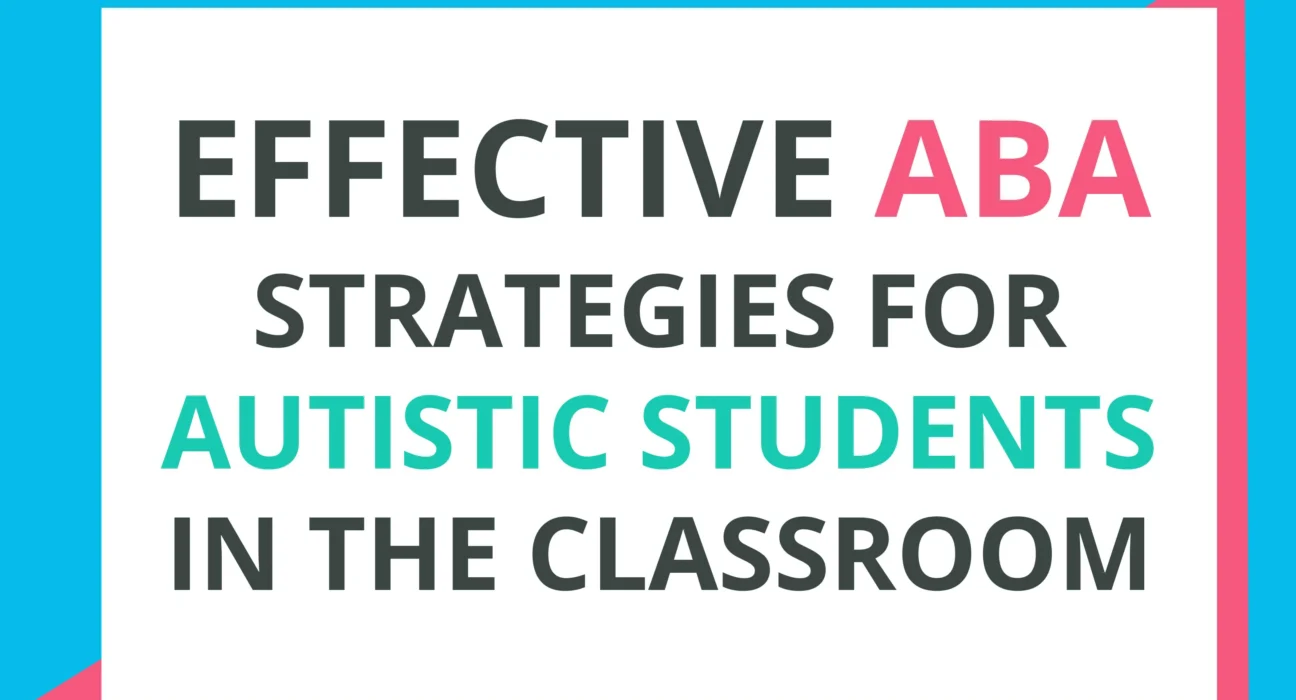Applied Behavior Analysis (ABA) is a well-established and evidence-based therapy primarily used to support individuals with autism. By focusing on reinforcing positive behaviors and reducing challenging ones, ABA aims to enhance social, academic, and adaptive skills. Integrating ABA therapy into classroom settings can significantly benefit autistic students by creating a structured and supportive learning environment that caters to their unique needs. This article explores the principles of ABA, strategies for its effective integration in classrooms, and the numerous benefits it offers to autistic students.
Understanding ABA: Principles and Concepts
ABA therapy is grounded in the principles of behavioral psychology, emphasizing the relationship between behavior and environmental factors. Key concepts of ABA include:
- Positive Reinforcement: Rewarding desirable behaviors to increase the likelihood of their recurrence.
- Extinction: Reducing undesired behaviors by withholding reinforcement.
- Shaping: Gradually molding a new behavior by reinforcing successive approximations of the desired behavior.
- Prompting and Fading: Providing guidance to encourage desired behaviors and gradually reducing the assistance as the student becomes more independent.
- Task Analysis: Breaking down complex tasks into smaller, manageable steps to teach skills systematically.
Section 1: The Importance of ABA in the Classroom
ABA’s structured approach is particularly beneficial in educational settings, where consistency and repetition are essential for learning. For autistic students, ABA can help in:
- Improving Communication Skills: ABA techniques can be used to teach both verbal and non-verbal communication, catering to each student’s specific needs.
- Enhancing Social Interactions: Through targeted interventions, ABA can help students develop social skills, such as making eye contact, taking turns, and understanding social cues.
- Managing Challenging Behaviors: ABA strategies can effectively address behaviors such as self-injury, aggression, or tantrums, promoting a more conducive learning environment.
- Supporting Academic Achievement: By tailoring teaching methods to the student’s learning style, ABA can facilitate the acquisition of academic skills, from basic literacy to more complex problem-solving tasks.
Section 2: Strategies for Integrating ABA in the Classroom
Integrating ABA into classroom routines requires careful planning and collaboration among educators, therapists, and families. Here are some strategies to ensure successful implementation:
- Collaborate with ABA Professionals: Work closely with trained ABA therapists to design and implement individualized behavior intervention plans (BIPs) that align with each student’s needs.
- Incorporate ABA into Daily Routines: ABA principles can be embedded into everyday classroom activities, such as using positive reinforcement during academic tasks or employing task analysis to teach self-care skills.
- Utilize Data-Driven Decision Making: Regularly collect and analyze data on student behaviors and progress. This helps in making informed decisions about the effectiveness of interventions and adjusting strategies as needed.
- Create a Structured Environment: Consistency is key in ABA. Establish clear routines and expectations in the classroom to provide a predictable environment that supports learning.
- Use Visual Supports: Many autistic students benefit from visual aids. Incorporate schedules, behavior charts, and instructional visuals to support understanding and independence.
Section 3: Challenges and Solutions in Implementing ABA
While ABA offers numerous benefits, implementing it in a classroom setting can pose challenges:
- Limited Resources: Schools may face constraints such as a lack of trained ABA professionals or insufficient funding for one-on-one support.
- Solution: Advocate for additional training for teachers and support staff. Explore funding opportunities or partnerships with local ABA service providers.
- Resistance to Change: Some educators may be hesitant to adopt ABA methods due to unfamiliarity or concerns about its applicability.
- Solution: Provide professional development opportunities that demonstrate the effectiveness of ABA and offer hands-on training to build confidence in its use.
- Balancing Individual and Group Needs: Integrating individualized ABA interventions while managing a classroom can be challenging.
- Solution: Use small group instruction or peer-mediated interventions where appropriate. Encourage collaboration among students to foster inclusion and support.
Section 4: The Benefits of ABA for Autistic Students
The integration of ABA in the classroom provides a range of benefits, including:
- Behavioral Improvement: ABA has a proven track record of reducing challenging behaviors and replacing them with more appropriate alternatives.
- Increased Independence: By teaching self-regulation and adaptive skills, ABA helps students gain greater autonomy in daily activities.
- Enhanced Learning Outcomes: Structured and individualized instruction based on ABA principles can lead to significant academic progress.
- Social Inclusion: ABA strategies can promote better peer interactions and social participation, fostering a sense of belonging in the classroom community.
Section 5: Collaborating with Parents and Specialists
Successful integration of ABA in the classroom requires collaboration with parents and other professionals:
- Engage with Parents: Regular communication with parents ensures that ABA strategies are consistent across home and school environments. Share progress reports and involve parents in setting goals for their child.
- Work with Specialists: Collaboration with speech therapists, occupational therapists, and other specialists can enhance the effectiveness of ABA interventions. Regular meetings and shared goals help maintain a unified approach to supporting the student.
Conclusion
Integrating ABA therapy into the classroom setting offers a powerful tool for supporting autistic students. By employing data-driven, individualized strategies, educators can create a learning environment that promotes positive behaviors, academic achievement, and social inclusion. The collaboration between teachers, ABA professionals, and families is essential to maximize the benefits of ABA and help students reach their full potential.
Resources and References
- Books: “Applied Behavior Analysis for Teachers” by Paul Alberto and Anne Troutman.
- Online Courses: Autism Partnership Foundation offers free online courses in ABA.
- Research Articles: “Applied Behavior Analysis in the Classroom” – Journal of Applied Behavior Analysis.


